- A recent Bankable Feasibility Study/BFS (20-year mine life) estimates an after-tax NPV8% of US$5B, and an after-tax IRR of 27%, with a capital-intensive initial CAPEX of US$4B. GPH is trading at just 4% of its AT-NPV8%.
- Management plans to launch STP operations first, using third-party graphite concentrates until Graphite Creek comes online. To reduce upfront costs and risk, GPH is pursuing a phased modular buildout, with each module producing 25 ktpy of AAM versus 169 ktpy in the BFS. The first module requires US$607M CAPEX, or just 15% of the BFS estimate. It will also be built in stages, starting with an initial US$60M CAPEX stage designed to generate early cash flow before expanding to the full 25 ktpy capacity.
- The company is entering a critical phase of development, gaining meaningful traction from both the U.S. government and key industry players. GPH has signed offtake agreements with Lucid Group (NASDAQ: LCID), accelerated its feasibility study by 15 months with support from a US$37.5M grant from the U.S. Department of Defense, and was recently added to the U.S. Government’s FAST-41 Federal Permitting Dashboard, placing it among a select group of critical mineral projects eligible for expedited permitting. In addition, the U.S. Export-Import Bank (EXIM) has issued letters of interest to potentially finance up to US$895M of construction costs, a major vote of confidence in the project.
- GPH is well funded, having raised C$20M through two recent equity financings. Upcoming catalysts include AAM facility site selection, environmental studies, and permitting activities at the Graphite Creek property. We believe GPH is an attractive M&A target for large miners or technology companies seeking a stable, long-term U.S. graphite supply. The U.S. government’s recent decision to acquire a 5% stake in Lithium Americas’ (TSX: LAC) Nevada project underscores its intent to secure domestic battery material supply chains.

Price and Volume (1-year)
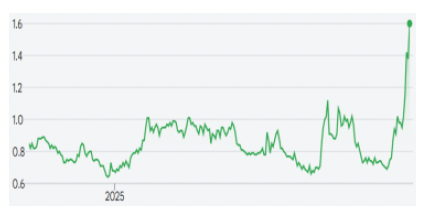
| |
YTD |
12M |
| GPH |
139% |
88% |
| TSXV |
53% |
60% |
Company Overview
GPH is developing a fully integrated supply chain from mine to battery-ready anode material, targeting EVs and energy storage. The strategy combines a secondary treatment plant (STP) in Ohio, with natural flake graphite supply from its Graphite Creek mine in Alaska.
Graphite Creek Project, Alaska (100% owned)
This advanced stage graphite property, covering 9,583 hectares, is located on the Seward Peninsula, Alaska.
GPH gained control of the project in 2011. Located 60 km north of Nome, Alaska, with seasonal port access
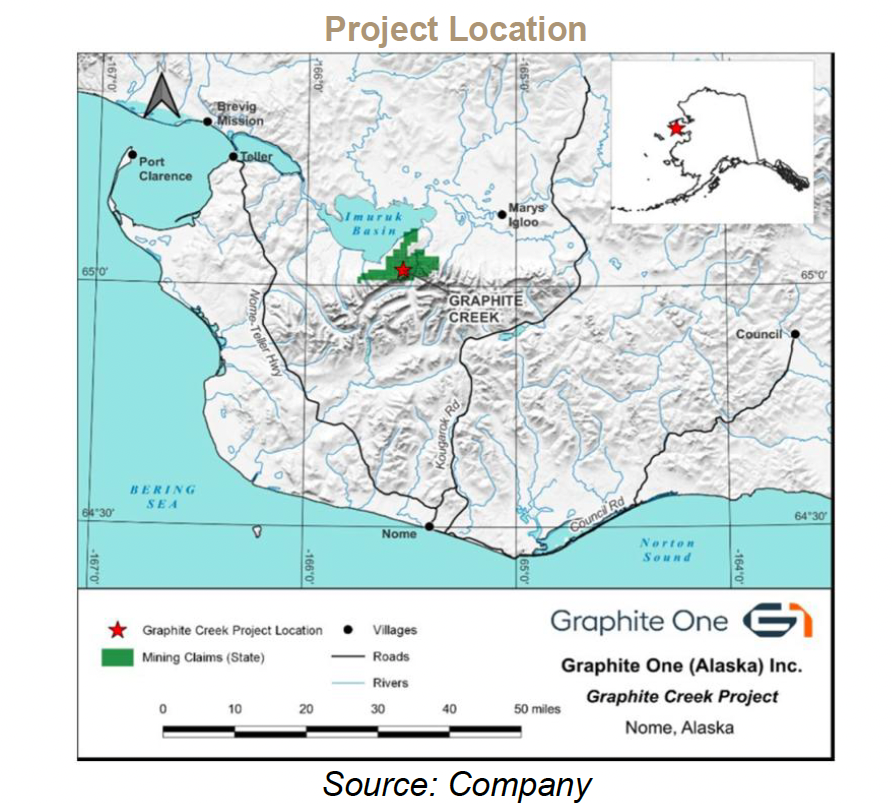
A remote greenfield site with no road or grid power access, GPH intends to build an access road to the Nome-Teller highway to support future mining operations
Power will come from a diesel generation plant, with water sourced from the Cobblestone River and surface streams
Graphite Creek is the largest known graphite deposit in the Americas, with 16.4 Mt Cg resources suitable for large-scale open-pit mining
Mineralization, Resources, and BFS
The project hosts a medium-grade flake graphite deposit, with 188 drill holes completed since 2012.
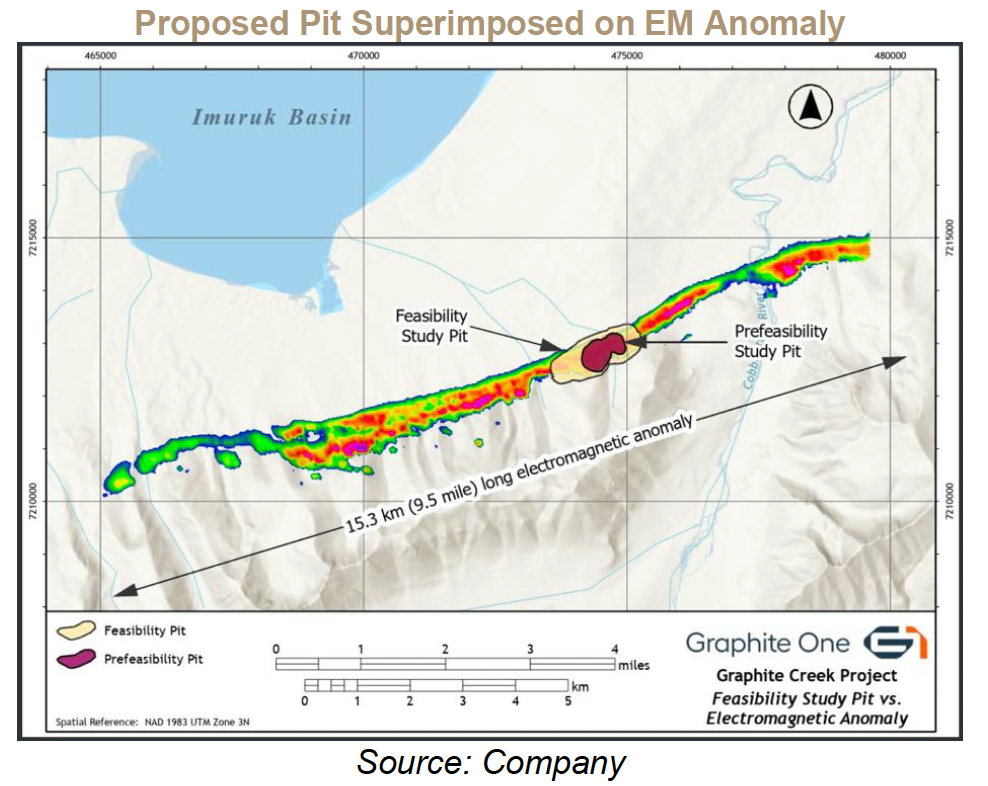
The proposed pit and reserves cover just 12% of a 15.3 km anomaly, reflecting significant expansion potential
Management plans to mine graphite from Graphite Creek, and process it into concentrates at a proposed 175 ktpy processing plant adjacent to the mine. Dried concentrates will be transported to the port of Nome, and shipped to a proposed 256 ktpy Secondary Treatment Plant (STP) in Ohio, designed to produce graphite AAM, and other value-added graphite products.
A recently completed Bankable Feasibility Study, based on a 20-year mine life, returned an after-tax NPV8% of US$5B, and an after-tax IRR of 27%
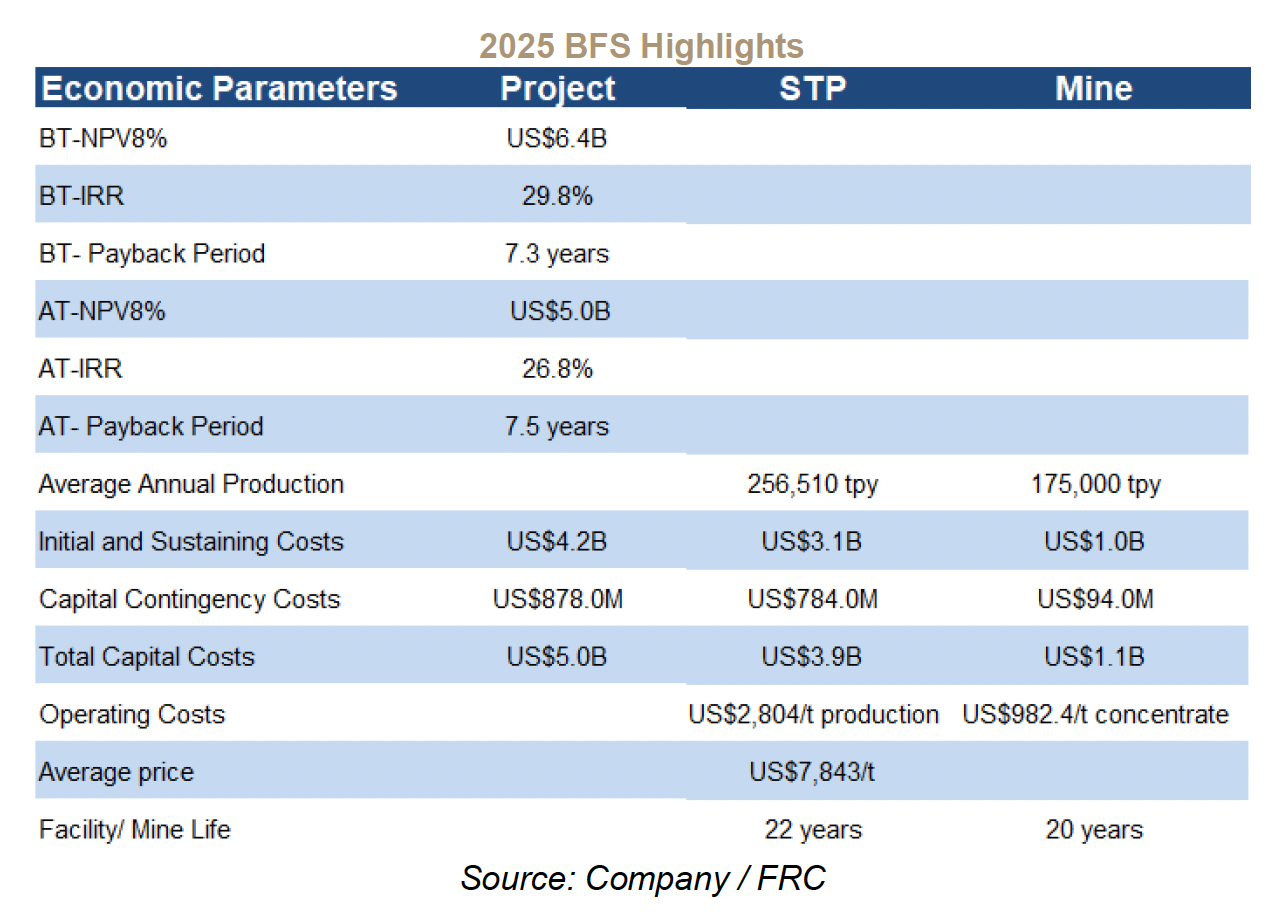
As with most large projects, the proposed operation is highly capital-intensive, with an initial CAPEX of US$4B, including US$0.9B for the mine, and US$3.1B for the STP
The STP is expected to produce 169 ktpy of Anode Active Material (AAM) for EV and energy storage batteries, 25 ktpy purified graphite for specialty markets, and 31 ktpy unpurified/carbon products for traditional markets
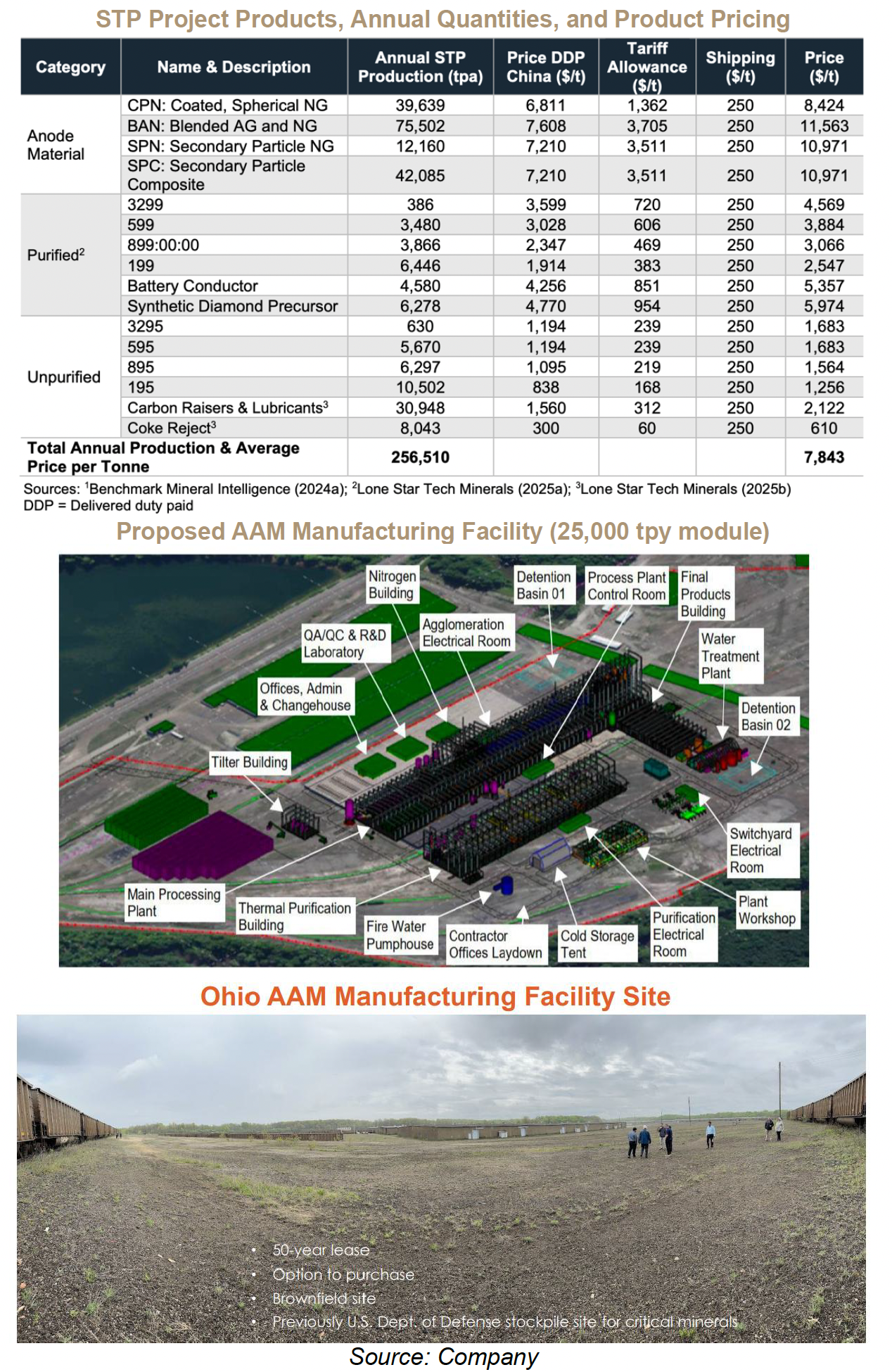
The BFS used a weighted average product price of US$8k/t, which we believe is reasonable, given current refined product spot prices of US$6k-$12k/t
For the STP site, GPH has an option to purchase an industrial property leased in Niles, Ohio, for approximately US$4.5M
Development Plan
While the BFS outlines advancing the mine to production alongside building the STP, management has decided to accelerate the process by prioritizing the construction and commissioning of the STP first, likely by 2027. GPH will use third-party graphite concentrates as feed until Graphite Creek comes online around 2030.
To reduce upfront costs and execution risk, GPH plans a phased buildout using a modular approach, with each module capable of producing 25 ktpy of lithium-ion battery AAM. The first module is expected to require CAPEX of US$607M, including US$121M in contingency, a figure we consider highly reasonable, as it represents only 15% of the initial CAPEX estimate in the BFS. Also, this level of CAPEX is well within the reach of a junior like GPH to raise.
The first module will be built in stages. An AAM module typically includes three key processes: Purification, Graphitization, and Finishing & Blending. GPH initially plans to set up a 10,000 tpy Finishing & Blending facility at a cost of just US$60M, allowing it to begin generating cash flows before gradually adding the other processes and ramping up operations to 25 ktpy.
The planned AAM facility in Ohio has access to relatively low power rates, and a skilled workforce Adopting a phased buildout to reduce upfront costs and execution risk
Funding Agreements/Endorsements
While GPH has been advancing its project for over a decade, we believe it is now entering a critical phase, gaining significant momentum from both the U.S. government, and key industry partners.
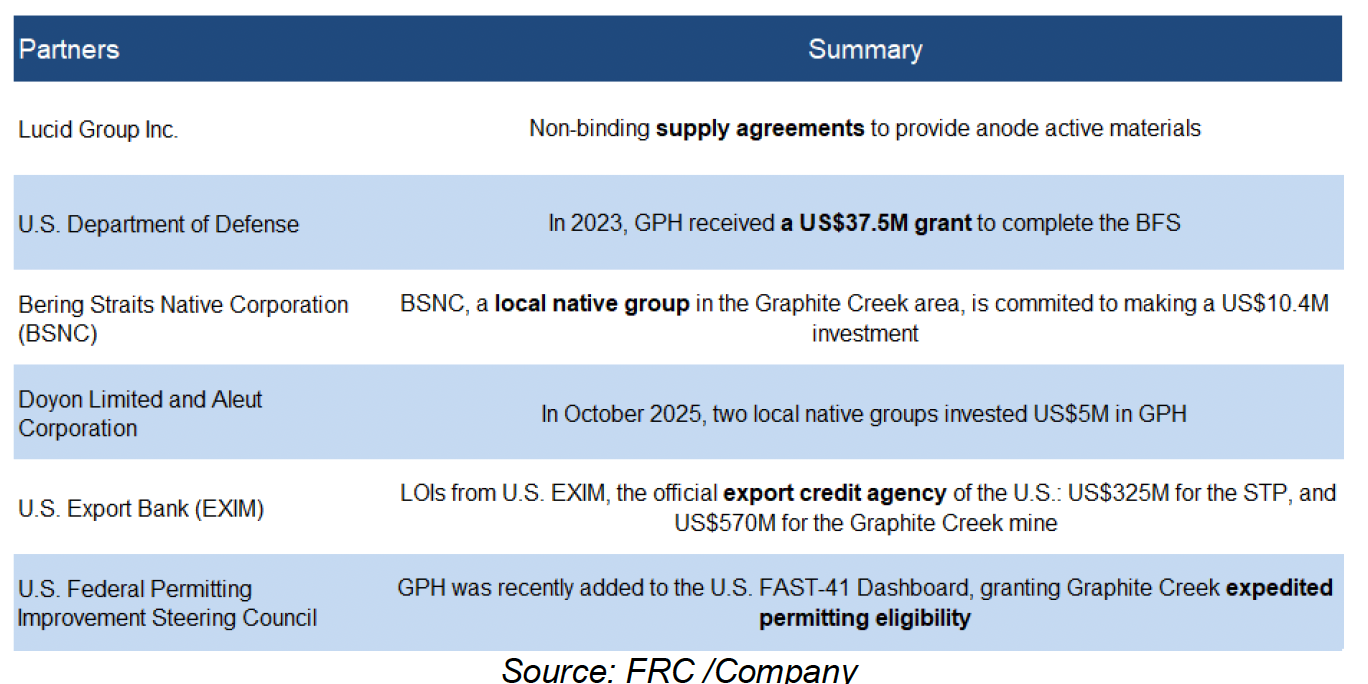
Graphite: Market Overview and Outlook
Graphite is used in a wide range of applications, including energy storage, thermal management, engineering products, graphite powder additives, lubricants, and plastic polymers. Certain products, such as battery anode materials, use a blend of natural graphite (NG) and artificial/synthetic graphite (AG), while in other cases only one type is suitable. GPH is primarily focused on sourcing natural graphite from its Graphite Creek project to produce AAM for batteries, and other refined graphite products.
Demand for NG is rising, as AG is often more expensive to produce, and carries greater environmental concerns due to its energy-intensive manufacturing process. As the battery materials market grows, so does the demand for greener, responsibly sourced alternatives, making high-quality natural graphite increasingly attractive.
As battery demand grows, NG stands out for its lower production cost and smaller environmental footprint China is a major producer of advanced graphite products, accounting for 75-80% of global production of both NG and AG
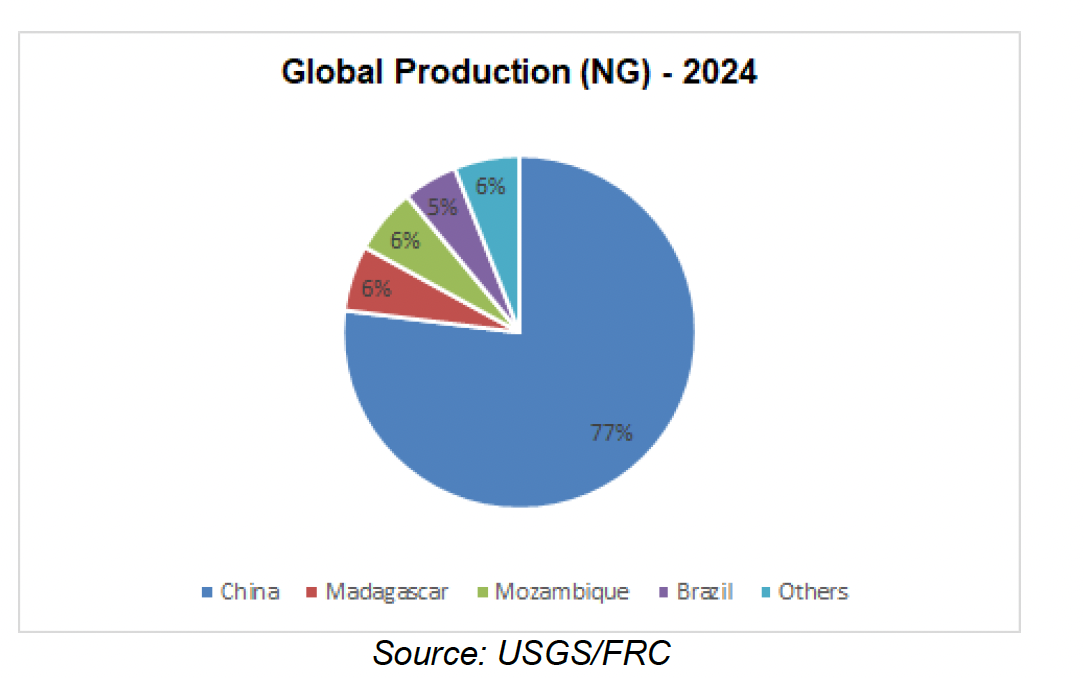
Asia accounts for over 80% of global NG (1.5 Mt/year) and AG (2.5 Mt/year) demand.
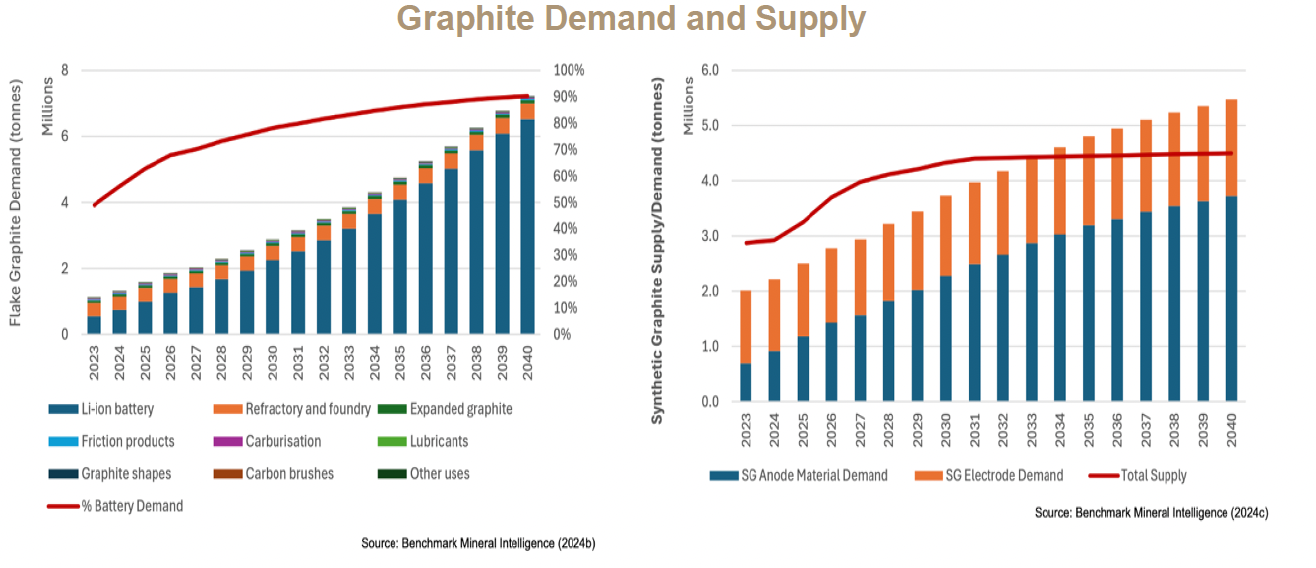
NG demand is projected to rise to 7.2 Mtpa, and AG to 5.4 Mtpa by 2040, mainly fueled by growth in EV battery and storage markets
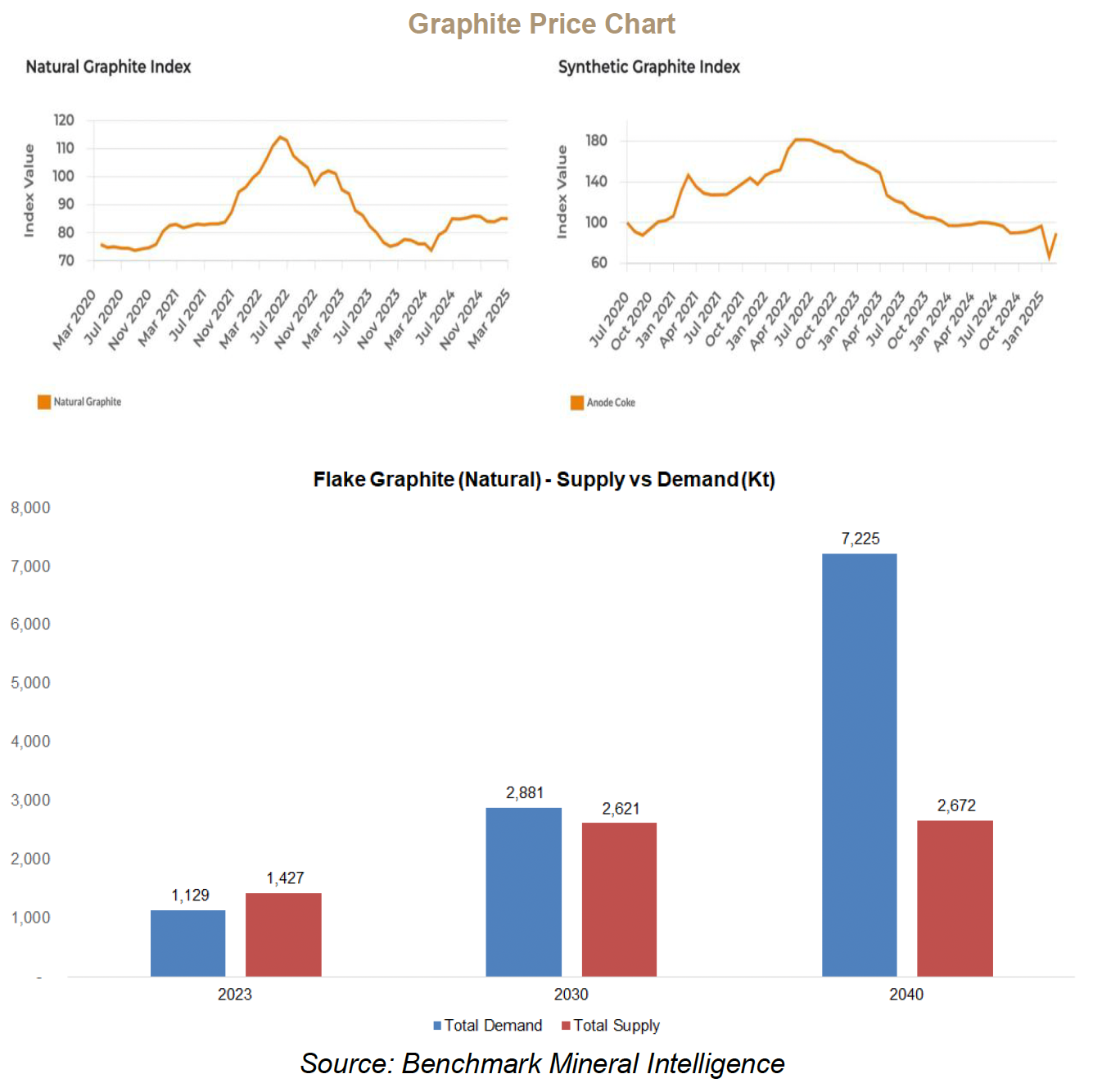
Management and board own 2.30% Taiga Mining, an Alaska-based mining company, owns 23.99% Four out of six directors are independent
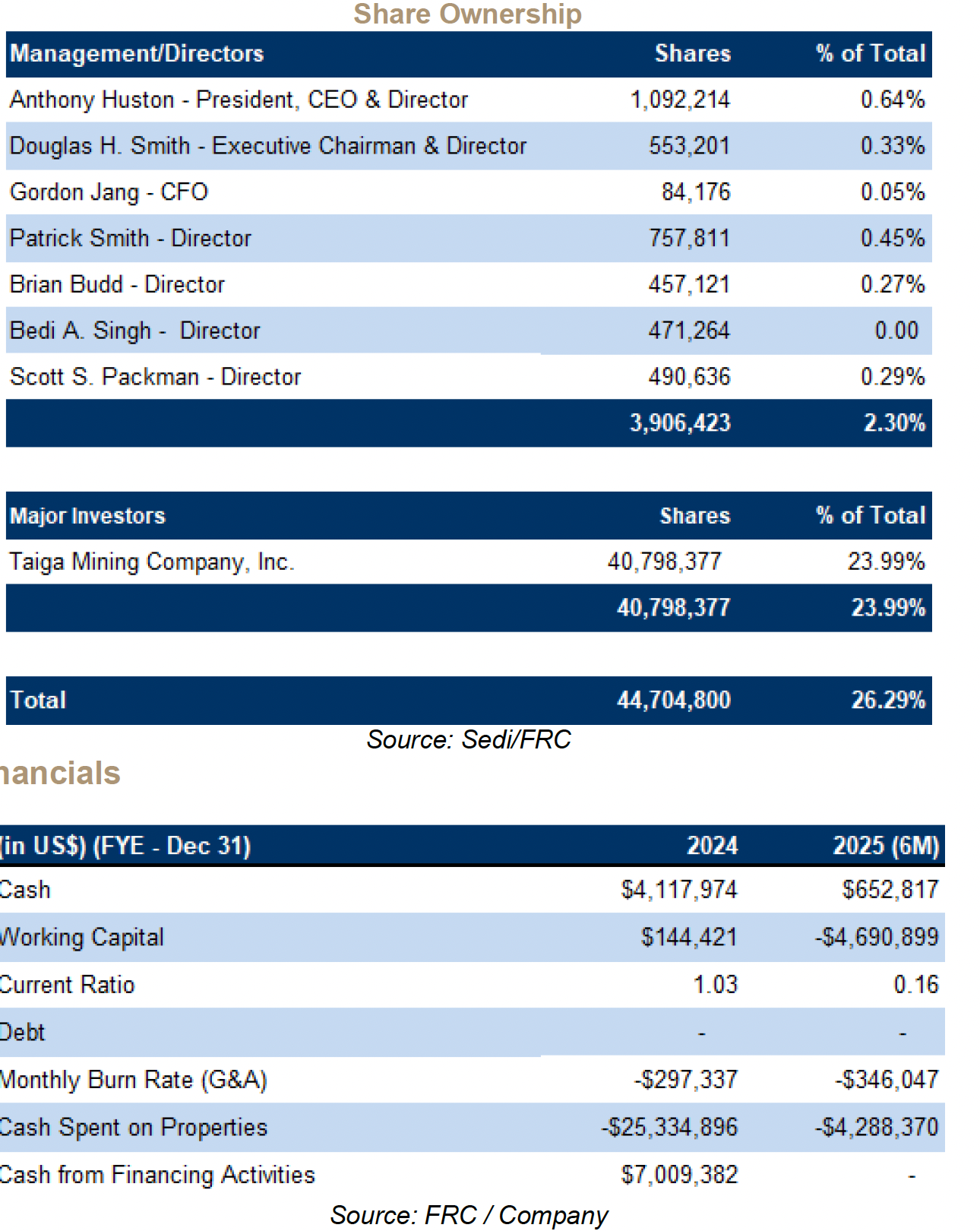
Subsequent to Q2-2025, GPH raised C$20M through equity financings
In-the-money options and warrants can bring in up to C$50M Our DCF valuation returned a fair value estimate of C$3.51/share
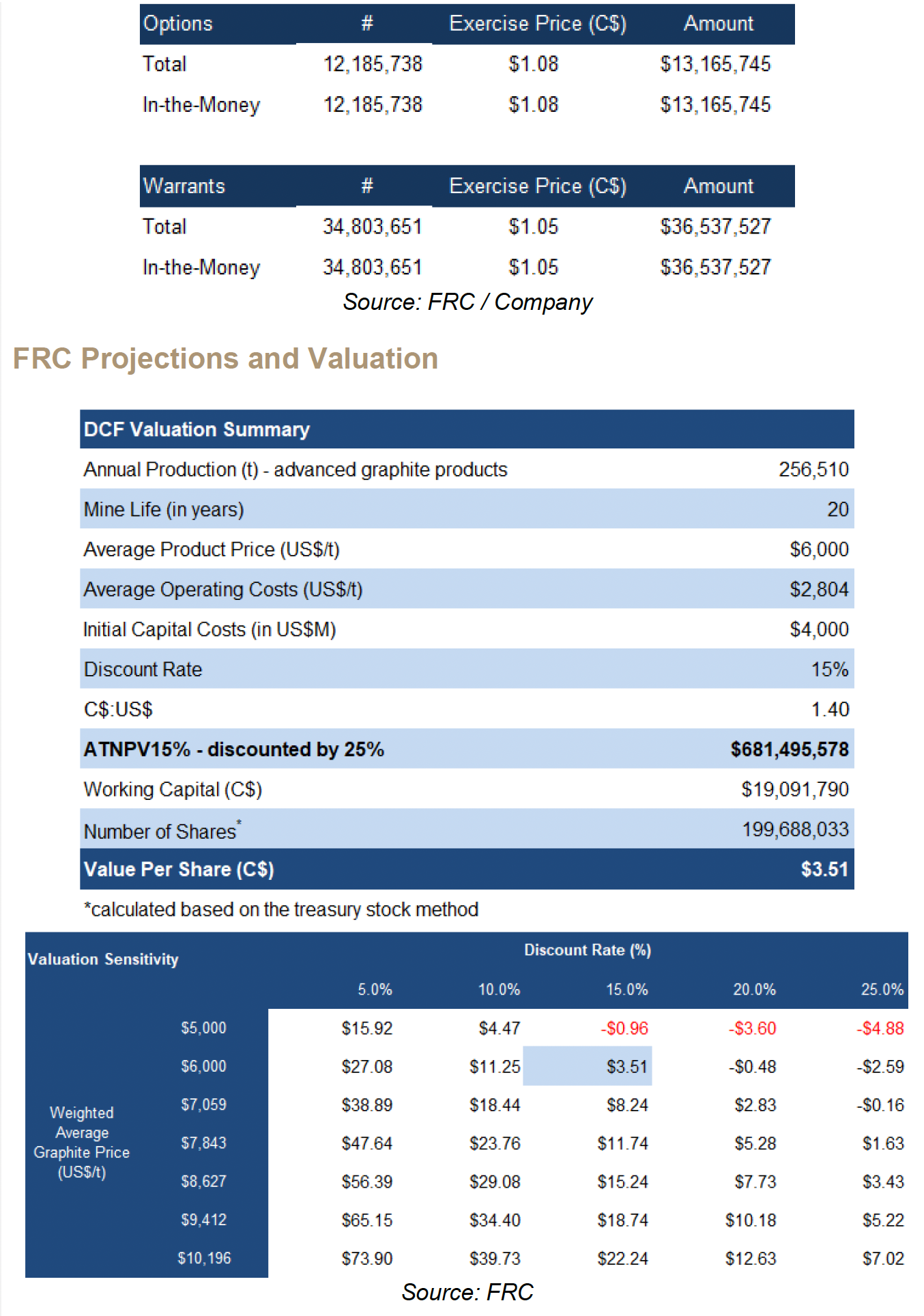
Our comparables valuation is C$2.20/share GPH is trading at C$28/t vs the sector average of C$40/t
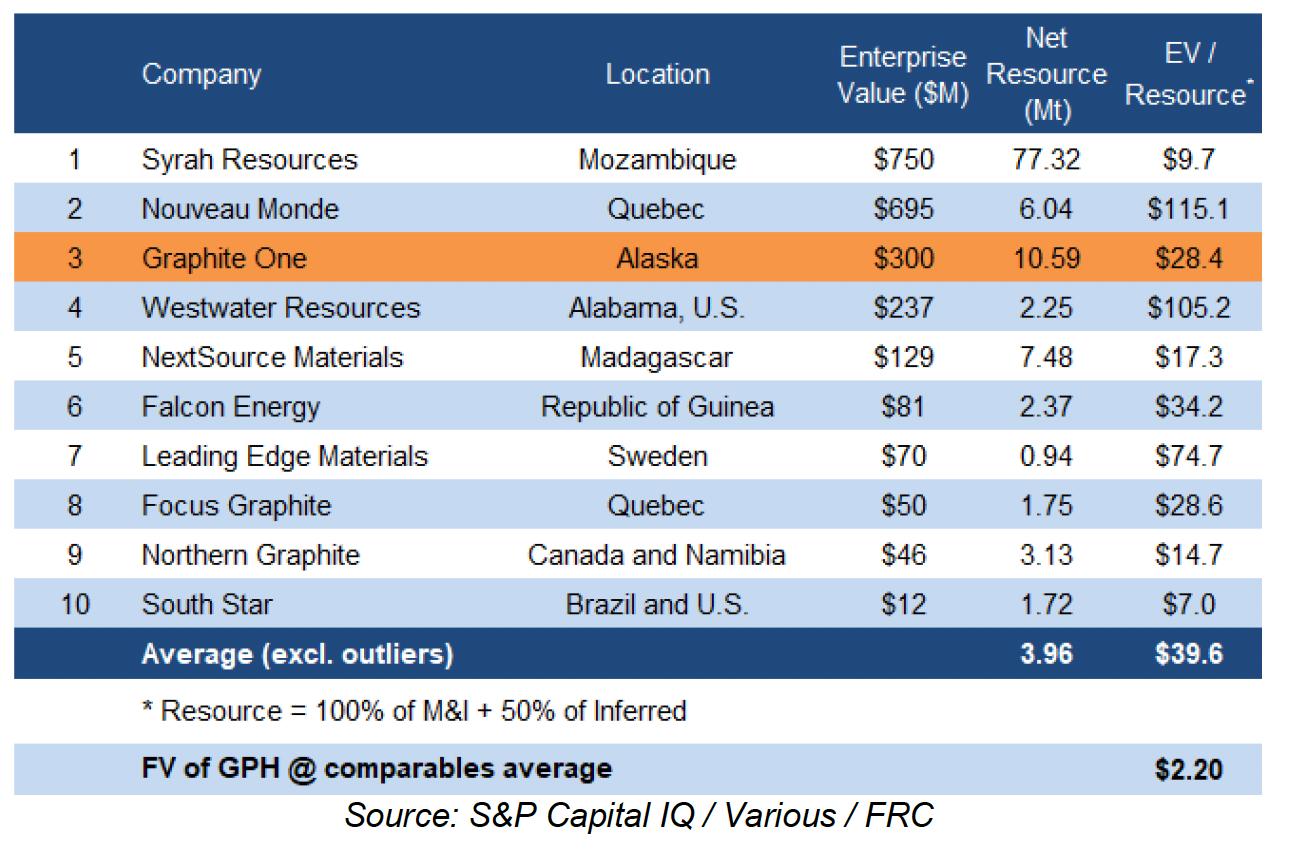
We are resuming coverage with a BUY rating and a fair value estimate of C$2.85/share, based on the average of our DCF and comparables valuation. GPH offers exposure to the largest known graphite deposit in the Americas, and a strategy to establish the first fully integrated U.S. mine-to-battery anode supply chain. Strong support from the U.S. government, including grants, loan backing, and expedited permitting, significantly de-risks project development. Near-term catalysts such as site selection, permitting, and phased STP construction could unlock value ahead of full-mine development. Given its discounted valuation, strategic positioning, and M&A potential, we see GPH as a compelling long-term opportunity in the battery materials sector.
Risks
We are assigning a risk rating of 5 (Highly Speculative)
- We believe the company is exposed to the following key risks (not exhaustive):
- The value of the company depends on graphite prices
- Permitting
- Access to capital and share dilution
- Accessibility and development. Current road access to the Graphite Creek property is seasonal, and limited to four – five months each year
- Graphite Creek has no existing infrastructure, thus requiring large CAPEX

















